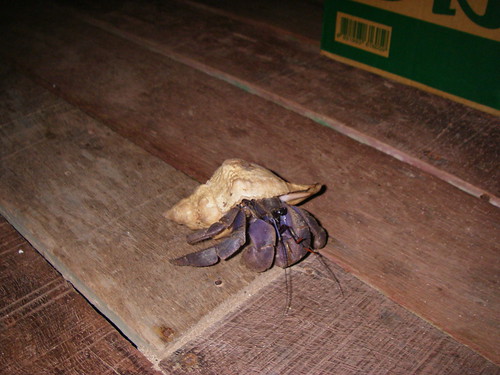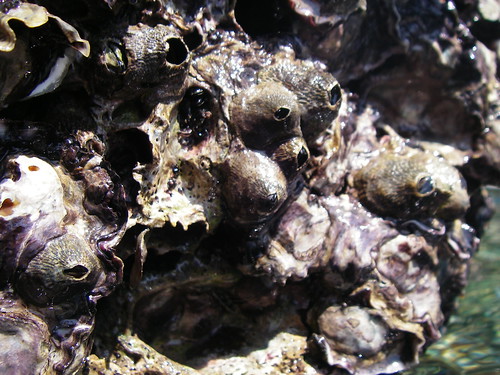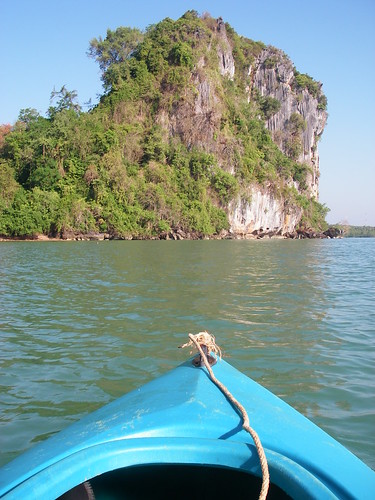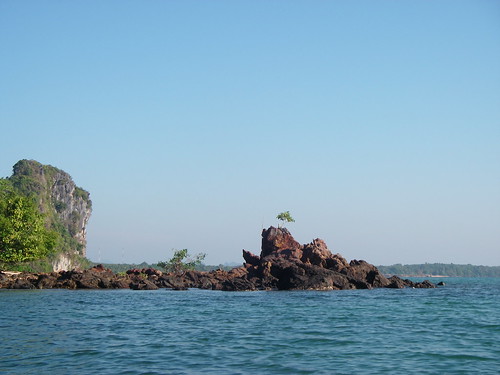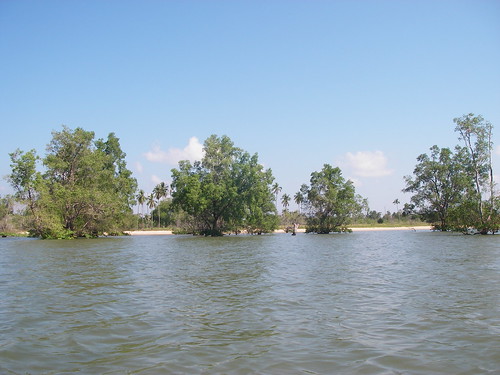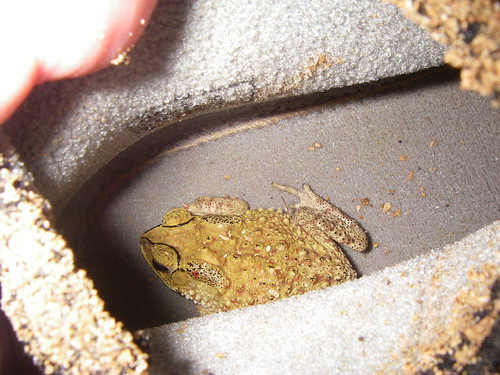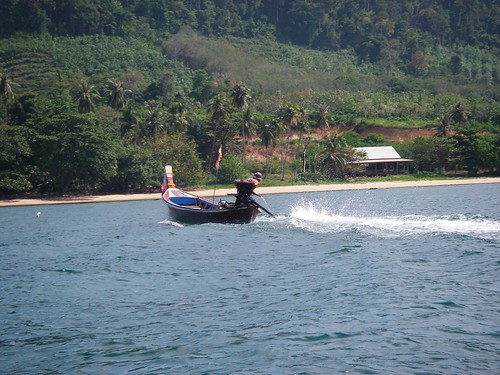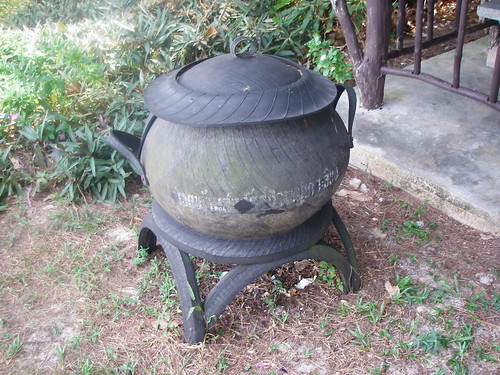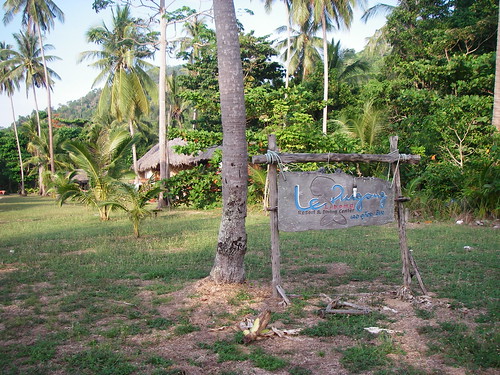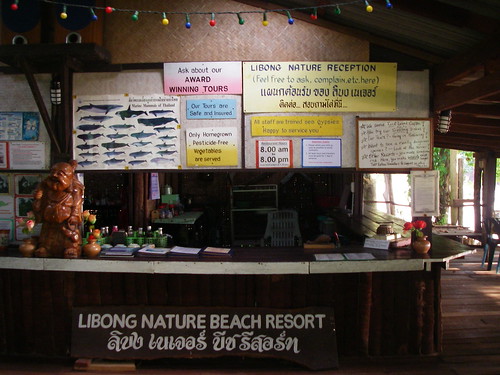Ko Libong: Crab Capital Of Thailand
Wednesday, January 13th, 2010Something clattered across the floor. A shell with legs protruding from it like a grotesque fist. Simon picked the thing up by its tip.
“This was right among the kittens!”
He pointed it towards the Swedes, who recoiled from the menacing pincers.
“I’ve never see such a monster hermit crab,” I said.
“Oh, they grow bigger,” Simon replied.
When I went beachcombing that morning, all the pretty shells had scuttled away from my reaching fingertips. Every shell big enough to house a hermit crab, did, with the juveniles sticking to the tideline rather than the rock pools as they do at home. And as for the adults: they are terrestrial. I think they feed on kittens.
And it’s not just the hermit crabs. Simon brought up a photo on his camera screen: a crab the size of my foot holding a toad by its hindleg.
“I’ll be sure to wear my booties,” I said.
But this is just skimming the surface. The terrestrial crabs have escaped the intense competition that is going on at sea. I can hear it in the clicking in the mud. The sand is covered by the neat pearls of their excavations. And crabs are part of the fauna that comprises the oyster-barnacle community which encrusts certain rocks like a belt just below the tideline.
An exuberance of life, above the surface and below.
